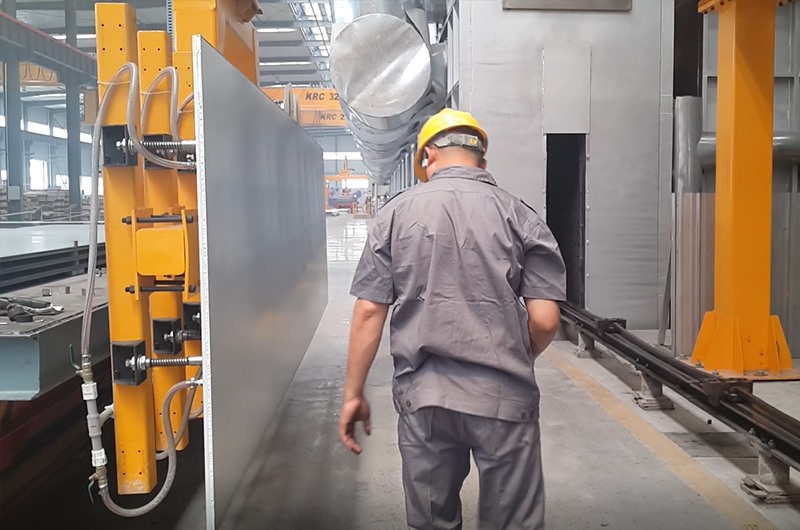company news
Grain refinement of as-cast microstructure of high-end deformed aluminum alloy
1.1 Rapid solidification method
Rapid solidification is the use of high cooling rates to obtain fine grain structures. Typically, the grain size decreases with increasing cooling rate. At the same time, fast cooling can also reduce the dendrite spacing to obtain a more uniform internal structure of the grains, which has a positive impact on the subsequent processing deformation. The rapid solidification method is not widely used in traditional casting methods of deformed aluminum alloys (such as semi-continuous casting), but the combination of rapid cooling technology and powder metallurgy process can produce large-sized high-alloyed ingots with fine grains and uniform composition. The injection molding process is a typical representative, and it has been used to produce some 7××× aluminum alloy ingots.
1.2 Kinetic method
The dynamic method refers to the use of various vibration methods to increase the nucleation particles of the metal melt during the solidification process, and to form as many nuclei as possible to achieve the purpose of refining the grains. Vibration methods mainly include mechanical stirring, mechanical vibration, electromagnetic stirring, sound wave and ultrasonic vibration.
(1) Mechanical stirring and vibration. By subjecting the aluminum alloy melt to mechanical stirring and vibration during the solidification process, a three-dimensional flow is formed. The complex physical and chemical effects such as heat transfer and mass transfer change the structure and energy fluctuation of the melt, so that the melt composition tends to be uniform. , and create favorable thermodynamic and kinetic conditions for the nucleation and growth of the crystallization process. In addition, stirring and vibration also promote the fracture of the alloy dendrite arms. The dendrite fragments entering the melt can become the preferred sites for the nucleation of new grains. The increase of nucleation sites means that more heterogeneous nucleation may occur. Significant effect on grain refinement. Mechanical stirring and vibration are widely used in industrial production and are an important part of casting production.
(2) Electromagnetic stirring. When electromagnetic stirring is applied to the casting of aluminum alloy, the metal melt flows regularly under the action of the electromagnetic field, so that the melt composition and temperature of each part tend to be uniform. With the increase of the melt flow rate, the columnar grains become smaller in length and width, and the initially formed dendrites are broken under agitation and act as new nucleation centers, resulting in a significant increase in the number of nucleation; at the same time, this strong The convection of the internal melt accelerates the cooling process of the internal melt, reduces the temperature gradient, and is beneficial to obtain a fine and uniform equiaxed grain structure. Compared with mechanical stirring, electromagnetic stirring and mechanical stirring have the same purpose and function. The difference is that the former uses the electromagnetic force generated by electromagnetic induction to promote the regular flow of metal, while the latter is achieved by mechanical forces such as mixer trucks or manipulators. All of them have been applied in engineering.
- Ultrasonic vibration. Ultrasound is a high-frequency sound wave. When propagating in liquid, liquid molecules are subjected to the action of periodic alternating sound fields to produce acoustic cavitation and acoustic flow effects. They will cause changes in the flow field, pressure field and temperature field in the melt, resulting in local high temperature and high pressure effects. The vibration of the liquid makes the dendrite arms fall off from the solidification front and act as heterogeneous nucleation cores in the melt, and the dispersing effect of ultrasonic waves on the melt makes the particle distribution more uniform. In addition, ultrasonic metallurgy can remove gas and slag, which is a melt purification technology.






